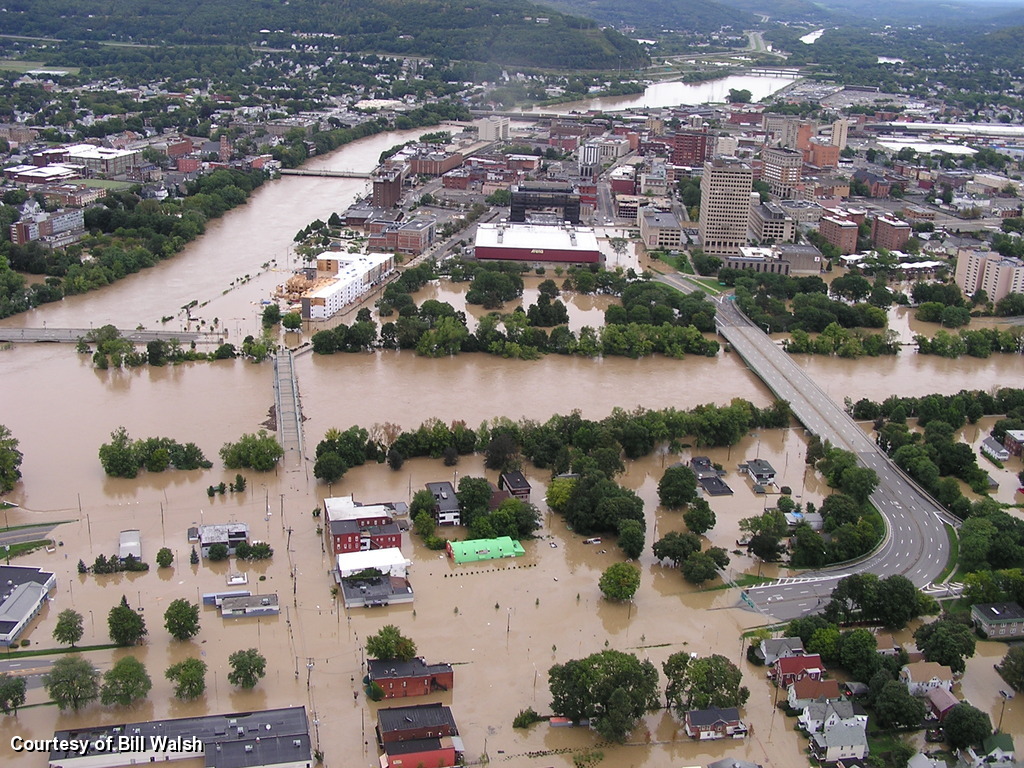A personal narrative, by Lala St. Fleur.
I used to live in Upstate New York, in a house with the Susquehanna River right in my backyard. In 2011, Tropical Storm Lee struck the east coast, the hurricane bringing heavy rains that flooded the Susquehanna, and all surrounding areas in New York and Pennsylvania alike. A state of emergency was enacted for my county and all others impacted by the Susquehanna, as our homes were all flooded in several feet of water. My family had to drive several counties over to find a cheap hotel that still had rooms, where we stayed for over a week to wait for the storms to pass and the waters to recede.
FEMA was called in, and inspected our house, but the relief money they gave us didn’t come close to covering the total damages and expenses. And no amount of money in the world would replace the priceless things lost; I used to be a hobbyist who drew and sketched, and all of the work I had done over the years was ruined. My family and I left Upstate NY in 2012, saying good riddance to that water-logged house and that river that had taken so much from us. We moved to NYC…only to be greeted by Hurricane Sandy that same year.
I am well aware of the very real dangers and consequences of climate change, global warming, and rising sea levels. I’ve waded up to my waist in river muck in my basement, struggling to wrap the fuse box and water heater in plastic and blankets as the water rose, only to toss everything down, grab whatever essentials we could pack into our car, and book it to drier, safer high ground.
I decided to enroll in college in 2014. At CUNY’s Brooklyn College, I chose an archaeological anthropology major with a double minor in history and classics. I worked on several projects examining the ways that the ever-changing natural environment shapes prehistoric, historic, and contemporary societies, with a focus on the cultural impact of ancient religious traditions. This included my creation of an ArcGIS Story Map that digitized major Natural Disasters of Ancient Japan (specifically: volcanic eruptions, earthquakes, and tsunamis), from the Kofun Period to the Tokugawa Shogunate, which I made during junior year. I was increasingly fascinated about how everything from Japanese religious practices and mythological deities, to architecture, city planning, and government policy were influenced if not directly derived from their understanding of natural cycles and forces. And so, for my undergraduate senior thesis paper, I expounded upon that topic by writing about Japan’s cultural, economic, and political responses to geological events and disasters, from the prehistoric Jōmon and Yayoi periods up to the modern Tōhoku Disaster of 2011.
By looking at the ways that the Japanese peoples have reacted to geological changes for well over 10,000 years, it helped put things into perspective for me about the endless challenges societies face in response to geological events. But there are also equally endless possible solutions that await discovery as those events continue to be researched, so that potential crises are mitigated.
Now pursuing my master’s degree at the CUNY Graduate Center, in the MALS program’s archaeology track, my research has become further grounded in religious and environmental studies. I primarily use geomyths (mythology pertaining to geological phenomena) as my main source of inspiration for academic analysis and inquiry about the relationships between people and the (super)natural world around us.
I am currently working on my master’s thesis, which examines various topographical features and archaeological sites throughout Greece that have long been believed to be the entrances to the underworld, Hades.
I enrolled in the MALS 78500 course on Interdisciplinary Perspectives on Climate Change in order to further my education about climate change, its history, and its future. For my final project, I hope to incorporate paleoclimatology into discussions about how humans have reacted to geological events, and how the planet has reacted in kind to human intervention.











